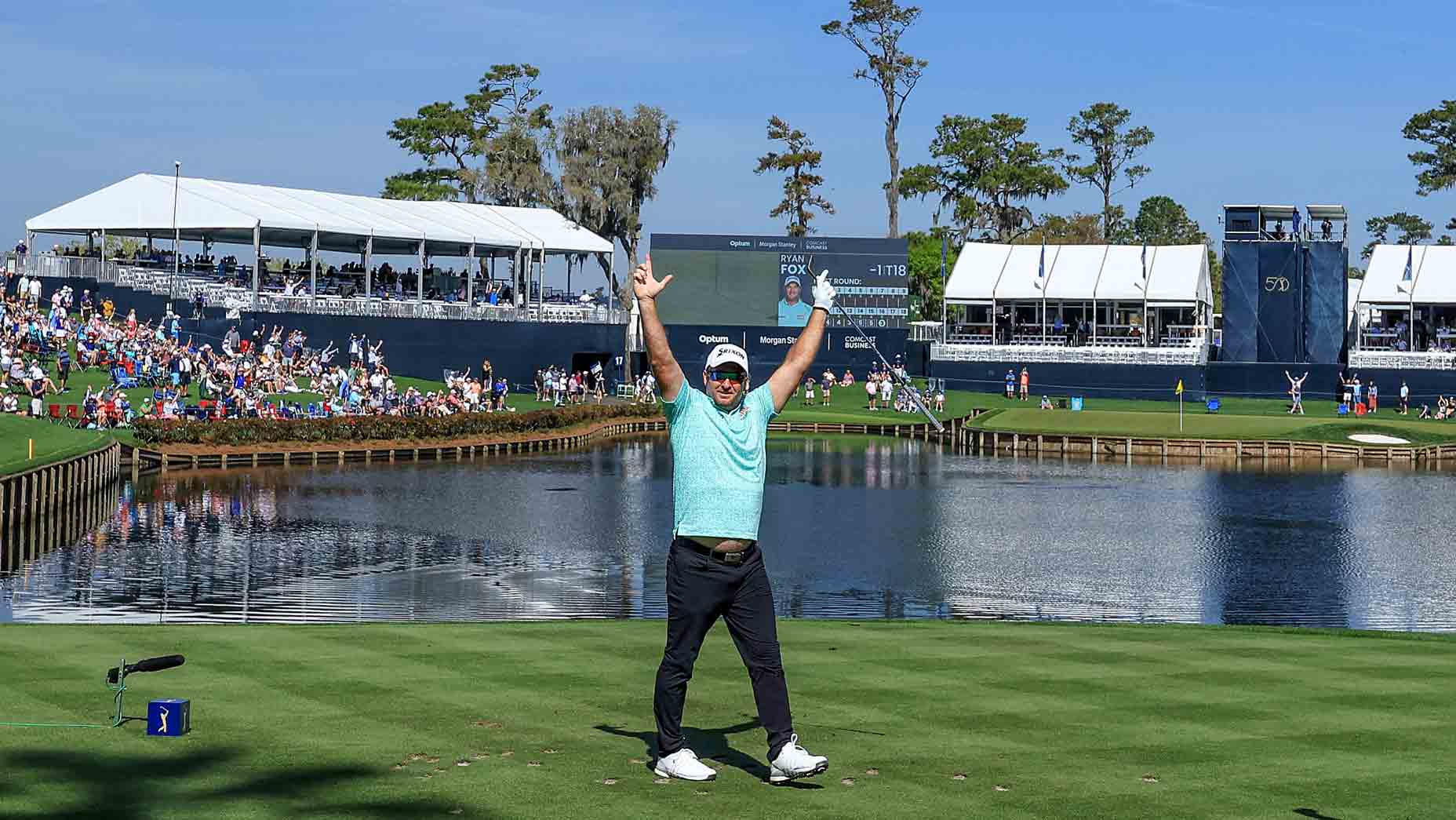Pete Dye had no interest in coddling PGA Tour players. He would frequently chuckle when pros would complain his courses were too difficult.
“Life is not fair, so why should I make a course that is fair,” said the legendary designer who passed away in 2020.
It would be a safe bet to say Dye wouldn’t love the setup of the Players Stadium Course at TPC Sawgrass, which he designed, for this week’s Players Championship.
In particular, Dye probably would have told the grounds crew to get out there with the mowers and shorten the ring of rough that has neutered the sharp edges on several of his most fearsome hazards.
Perfect examples would be the edges of the pond at Nos. 16 and 17 and again on the left side of No. 18 green, where thick rough several inches deep has stopped many marginally errant shots from rolling into the drink midway through the first round. Instead of a penalty and a drop, players have been rewarded with a short pitch from tall grass. Instead of rough presenting a challenge, around these greens it’s serving as a safeguard.
In 1982, Players winner Jerry Pate pushed Dye and Tour commissioner Deane Beman into the water off No. 18 green as penalty for such a difficult course, then dove in himself. This year, the rough would break their fall before they ever splashed in.
PLAYERS: Live leaderboard, hole-by-hole descriptions
In years past, the fringes of those greens were slightly taller than the green heights. Balls that landed on the final three greens could spin or bounce off the putting surfaces, cross the fringes while hardly slowing down, then splash into the water. With the increased ring of rough this year, those same shots come to an overly safe stop. Several players have had to stand on the boards ringing the greens to play their next shots, but that’s much less penal than taking a drop.
Watch your step
pic.twitter.com/OgeZ7gBRU8
— PGA TOUR (@PGATOUR) March 14, 2024
Patrick Cantlay was an early recipient of a good bounce off what are essentially childproof bumper rails on a bowling lane. His second shot into the par-5 16th flew too deep into the green and sped toward the back, where the ring of rough stopped the ball. Standing on the boards, Cantlay pitched his third to within a few feet of the hole and made birdie. In years past, that second shot likely would have been sunk and Cantlay would have been scrambling for a par, with bogey likely.
Viktor Hovland was the recipient of such kindness on No. 17. His tee shot to the island green landed pin high to the front hole location and spun backward, a shot that in years past often recoiled into the water. Hovland’s ball hit the line of rough surrounding the front of the green this year and stopped, allowing him to play his second shot with a putter instead of his third shot with a wedge from the drop zone.
In the same group as Hovland, Jordan Spieth caught a big break with the rough surrounding 18 green. Playing his second from the trees right of the fairway, Spieth raced his ball low up the fairway, where it took the historically typical dive left toward the water at the front of the green. Instead of rolling in – yep, you guessed – Spieth’s ball hung up in the strip of rough. That ball wouldn’t have stood a chance if Dye had his way.
That 18th green has been softened in recent years because even solid approach shots landing on the right side of the green could turn hard left and roll all the way across the green into the water. Fair enough. Lining the hazard with a big soft catcher’s mitt is taking the fairness too far, and Dye wasn’t interested in fair.
Want to see how No. 17, in particular, usually plays? Check out Ben An making an 11 in 2021, with several balls skittering through the fringe and into the water. As Pete Dye intended.
An 11 for Ben An
What score would you record if you played No. 17 at TPC Sawgrass?pic.twitter.com/xO713kdE2g
— Golfbet (@Golfbet) March 11, 2021
The Players Stadium Course already is playing lush and soft this week, allowing players to stop balls on the greens. It doesn’t help that players are hitting their tee shots so far they often have wedges and short irons into greens built to receive – or reject – long irons and even fairway woods. That’s true even on the par 5s at the Players Stadium Course this year.
We get it, these guys are good, and given such soft conditions they are going to make buckets of birdies. They clearly don’t need training wheels, and they don’t need guard rails around the water.










